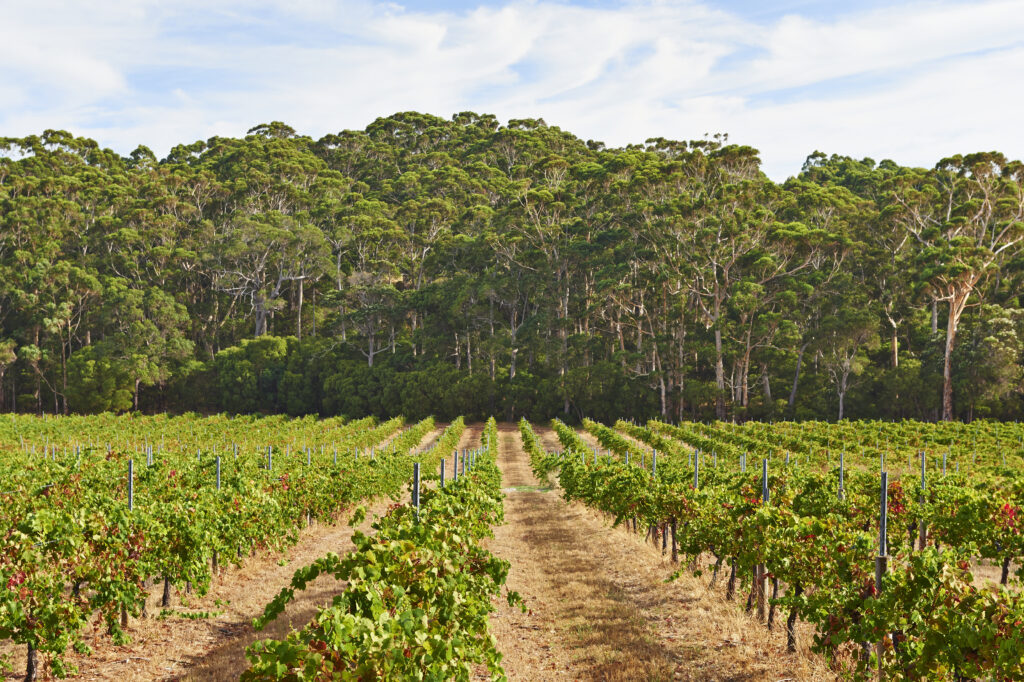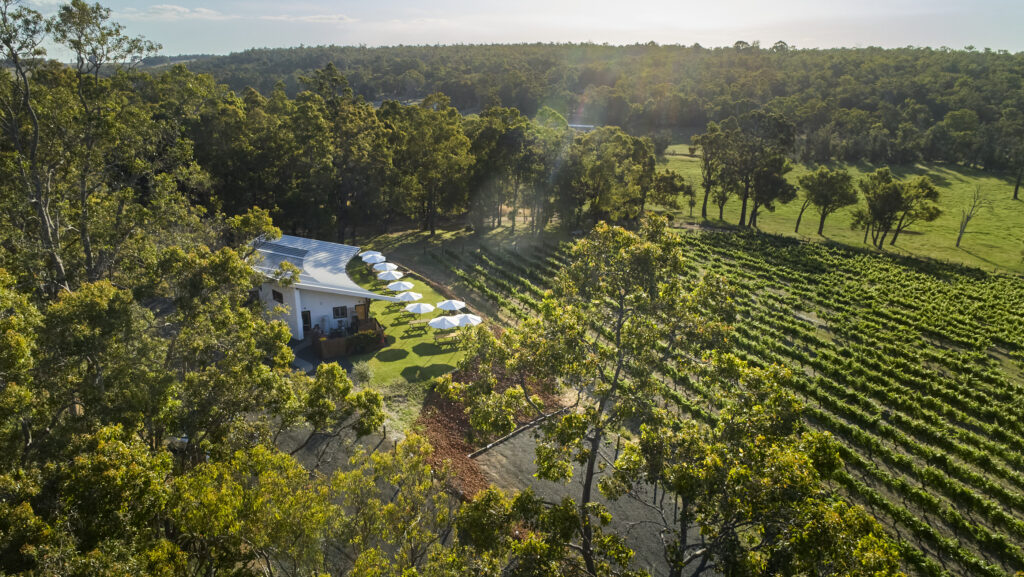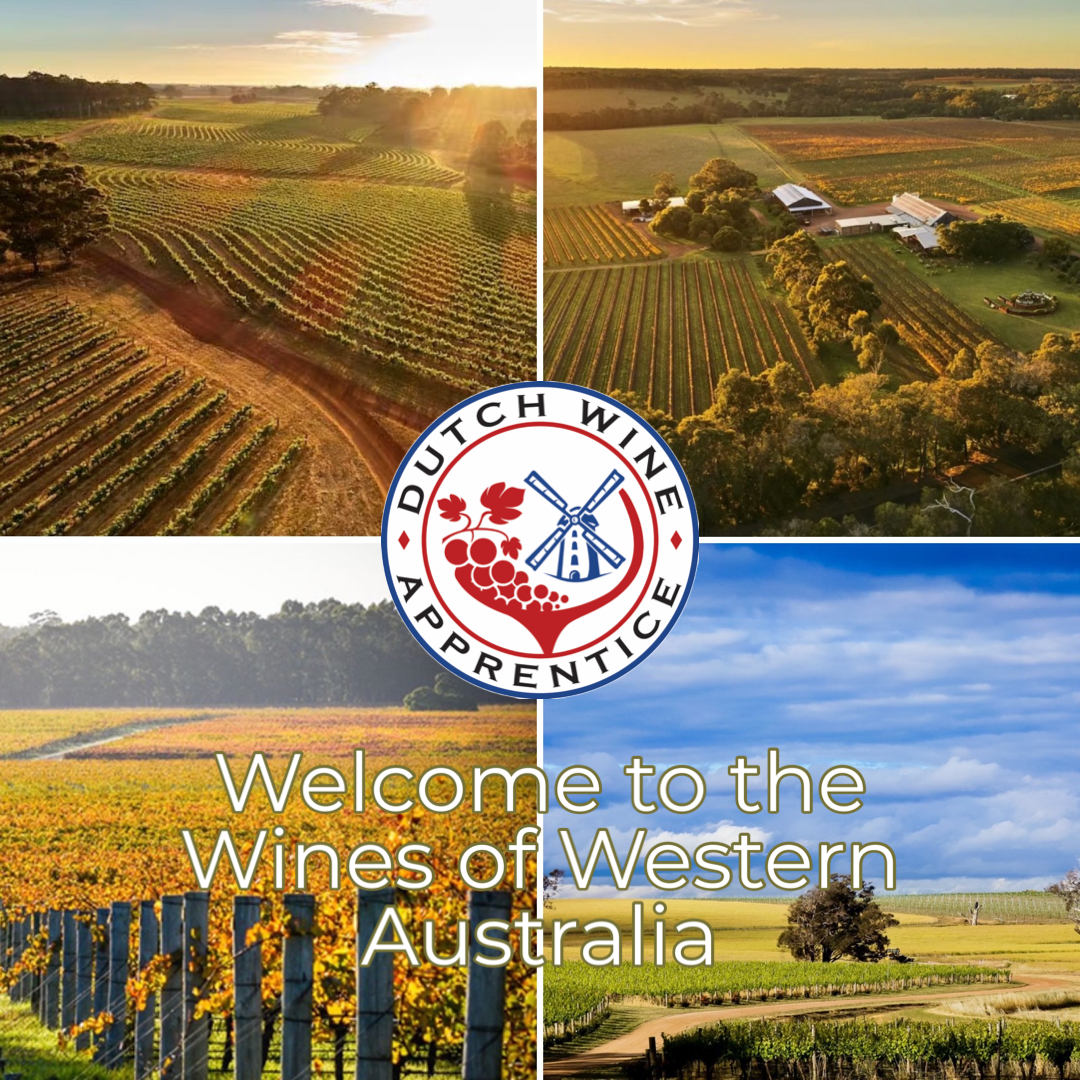Welcome to the Wines of Western Australia.
Earlier we started our tour down-under, and welcomed you to the World of Australian Wine. Now it is time for our first deep-dive of this series, we are venturing into Western Australia!
Western Australia is the largest state in Australia, covering a vast land area of approximately 2.6 million square kilometres (1 million square miles). It occupies the entire western third of the Australian continent and is bordered by the Indian Ocean to the west and the Northern Territory and South Australia to the east.
The diverse geography and topography of Western Australia contribute to its varied ecosystems, climates, and landscapes. From stunning coastal regions to vast arid deserts and unique rock formations, the state offers a wealth of natural wonders and outdoor experiences. Including exceptional wine growing regions, most famously known for the varieties of Cabernet Sauvignon and Sauvignon Blanc + Sémillon blends, classically abbreviated to SSB.

History of Wine Making in Western Australia
The history of wine making in Western Australia is a tale of perseverance, innovation, and growth. It began in the early 19th century with the first European settlers, who recognized the region’s potential for viticulture due to its Mediterranean-like climate and diverse terroirs. However, it wasn’t until the mid-20th century that the industry gained significant momentum. Pioneering winemakers, often of European descent, brought their expertise and techniques to the region, gradually transforming Western Australia into a prominent wine-producing area. The establishment of key wine regions such as Margaret River, Swan Valley, and Great Southern further solidified the state’s reputation for producing high-quality wines, particularly renowned for their bold reds and elegant whites. Today, Western Australia stands proudly as one of Australia’s premier wine destinations, celebrated for its distinctive varietals and its contributions to the country’s rich winemaking heritage.

Wine classification in Western Australia
In Western Australia, wine classifications play a crucial role in categorizing and regulating the quality and characteristics of wines produced within the region. The system typically employs a hierarchy based on factors such as grape variety, geographic origin, and production methods. One of the most recognizable classifications is the Geographical Indication (GI) system, which designates specific regions, such as Margaret River or Great Southern, known for their unique climate and soil conditions. Wines labelled with a particular GI must adhere to specific rules and standards to maintain the region’s reputation for producing distinct and high-quality wines. Additionally, the system often includes sub-regions or appellations within GIs, reflecting even finer distinctions in terroir. Winemakers in Western Australia use these classifications not only to showcase the diversity of their wines but also to provide consumers with valuable information about the characteristics and provenance of the wines they choose.

Wines from Western Australia
Western Australia has become increasingly renowned for its wine production, particularly in regions known for producing high-quality wines. The climate in Western Australia varies significantly across its various wine regions, which are spread out over a large geographical area. The state’s diverse climate allows for the production of a wide range of wine styles, from cool-climate wines in the south to warmer climate wines in the north. Here are some key characteristics of the wine-growing climates and soils in Western Australia’s major wine growing regions:
Margaret River
Margaret River stands as arguably Western Australia’s most renowned wine region, nestled in the southwestern corner of the state. It has gained acclaim for its exceptional offerings of Cabernet Sauvignon and Chardonnay wines. The area’s maritime climate, graced by refreshing ocean breezes, plays a pivotal role in nurturing wines that exude remarkable balance and sophistication. This region boasts a Mediterranean climate marked by mild, moisture-laden winters and warm, arid summers. The ocean’s close proximity tempers temperature fluctuations, while its maritime influence fosters a protracted and gradual grape ripening period. This unique climate forms an ideal backdrop for crafting premium Cabernet Sauvignon and Chardonnay vintages. Moreover, the diverse soil types found in Margaret River, including gravelly and sandy soils, further contribute to the complexity and distinct character of its wines.
Swan Valley
Situated in proximity to Perth, the Swan Valley enjoys a warm Mediterranean climate characterized by scorching, arid summers and comparatively gentle, rain-kissed winters. This climatic tapestry proves conducive to cultivating an assortment of grape varietals, encompassing the likes of Shiraz, Verdelho, Chenin Blanc, and notably, fortified wines. As one of Western Australia’s most ancient viticultural areas, Swan Valley holds historical significance and has evolved into a cornerstone of the state’s winemaking heritage. This venerable region boasts a diverse viticultural landscape, featuring soils ranging from fertile loams to sandy compositions. These distinctive soil types, coupled with the climate’s influence, contribute distinct nuances to the wines produced here, underscoring Swan Valley’s reputation for producing a versatile array of wines, with particular renowned for its exquisite Shiraz, Verdelho, and Chenin Blanc, as well as its well-regarded fortified wine offerings.
Great Southern
Encompassing an expansive expanse, the Great Southern region sprawls across numerous sub-regions, each boasting a tapestry of distinct microclimates. Predominantly graced by a refreshing maritime coolness, some inland areas harbor a touch of the continental. This climatic medley serves as a cradle for an impressive array of wine styles, including the likes of Riesling, Shiraz, Pinot Noir, and Cabernet Sauvignon. As one of Australia’s most extensive viticultural landscapes, the Great Southern envelops a vast canvas, incorporating diverse sub-regions. Celebrated for its multifaceted vinous offerings, it embraces an eclectic repertoire ranging from the elegance of Riesling to the depth of Shiraz, the finesse of Pinot Noir, and the richness of Cabernet Sauvignon. The amalgamation of these microclimates within the region imparts an alluring versatility to its wines, while its expansive topography harbors an intriguing mosaic of soil types, adding yet another layer of complexity to its vinous tapestry.
Pemberton
Nestled in proximity to the Southern Ocean, Pemberton is graced with a maritime climate that imparts a refreshing coolness to its viticultural realm. This locale basks in a protracted, temperate growing period accentuated by brisk evenings, rendering it a veritable haven for nurturing the growth of Chardonnay and Pinot Noir varietals. Gaining increasing acclaim as a cool-climate viticultural gem, Pemberton is notably making its mark with exceptional Chardonnay and Pinot Noir offerings. The region’s bracing temperatures harmonize harmoniously with its fertile soils, establishing an optimal milieu for crafting wines of grace and finesse that beautifully reflect the unique attributes of the cool-climate terroir.
Frankland River
Embracing a Mediterranean climate characterized by balmy to scorching summers and invigoratingly cool nights, this locale offers an ideal canvas for nurturing an array of grape varietals, with Riesling and Shiraz notably taking centre stage as flagship cultivars. A constituent of the broader Great Southern landscape, Franklin River has carved its niche through its remarkable Riesling and Shiraz expressions. Nestled within the region’s embrace, its inland position plays a pivotal role in generating daytime warmth and nocturnal chill, a dynamic interplay that meticulously shapes the optimal milieu for grape cultivation. Moreover, the region’s diverse soils, which range from gravelly to loamy compositions, infuse further intricacy into its wines, showcasing the profound influence of terroir on the final vinous masterpiece.
Mount Barker
Mirroring its counterparts in the Great Southern, Mount Barker embraces a cool maritime climate, where the oscillation in temperatures from day to night plays a pivotal role in sculpting wines boasting both vibrant acidity and refined flavours. Reverberating within this region’s viticultural haven are the echoes of premium Cabernet Sauvignon, Shiraz, and Riesling, all celebrated as illustrious ambassadors of its winemaking prowess. Within the broader tapestry of the Great Southern, Mount Barker emerges as a distinct luminary, renowned for its exquisite offerings of Cabernet Sauvignon, Shiraz, and Riesling wines. As an integral facet of its identity, the region’s soil mosaic, ranging from gravel-laden to loamy compositions, weaves an intricate narrative, imparting a sense of place that gracefully shapes the unique character of its wines.
Porongurup
Basking in a refreshing cool-climate embrace, Porongurup reaps the rewards of maritime caresses, creating an ideal haven for cultivating the likes of Riesling and Pinot Noir. This petite gem nestled within the Great Southern’s expanse shines as a haven for boutique wineries, carving out its unique niche. It’s a realm where the artistry of viticulture converges with nature’s grace, resulting in exceptional Riesling and Pinot Noir wines that beautifully exemplify the terroir’s essence. Beneath its vine-strewn surface, Porongurup boasts a tapestry of soils, ranging from granitic sands to ironstone gravels, each contributing a distinct brushstroke to the canvas of its wines, painting a vivid portrait of its unswerving commitment to quality and character.
These regions collectively contribute to Western Australia’s growing reputation as a producer of high-quality wines, and they attract wine enthusiasts and tourists from around the world. The diversity in climates across Western Australia’s wine regions allows winemakers to experiment with different grape varieties and styles, resulting in a rich tapestry of wines that showcase the state’s winemaking prowess. It’s worth noting that the wine industry can evolve rapidly, so I recommend checking more recent sources for the latest updates and developments in Western Australia’s wine regions.

Cult Wines of Western Australia
Western Australia is home to numerous outstanding wineries that produce exceptional wines. The best wineries can vary depending on individual preferences and the types of wines you are interested in. Here are some of the top wineries in Western Australia, known for their quality wines and beautiful vineyards:
- Cullen Wines (Margaret River):
Known for their biodynamic and sustainable practices, Cullen Wines produces some of the region’s finest wines, including the iconic Cullen Diana Madeline (Bordeaux-style blend) and Kevin John Chardonnay.
- Vasse Felix (Margaret River):
One of the oldest wineries in the region, Vasse Felix is renowned for its classic Bordeaux blends, Cabernet Sauvignon, and Chardonnay. Their Heytesbury range is especially noteworthy.
- Leeuwin Estate (Margaret River):
Leeuwin Estate is famous for its Art Series Chardonnay, which consistently receives critical acclaim. The winery also produces excellent Cabernet Sauvignon and other varietals.
- Moss Wood (Margaret River):
A highly regarded winery, Moss Wood is known for its Cabernet Sauvignon, which has garnered attention for its age-worthiness and elegance.
- Howard Park (Great Southern and Margaret River):
Howard Park produces outstanding wines from both the Great Southern and Margaret River regions, including Riesling, Chardonnay, and Cabernet Sauvignon.
- Houghton (Swan Valley):
With a long history dating back to 1836, Houghton is one of the oldest and most respected wineries in Western Australia. They offer a diverse range of wines, including Shiraz, Cabernet Sauvignon, and Verdelho.
- Cape Mentelle (Margaret River):
Known for its Cabernet Sauvignon and Semillon Sauvignon Blanc blends, Cape Mentelle is a highly regarded winery with a focus on sustainable viticulture.
- Xanadu (Margaret River):
Xanadu consistently produces high-quality wines, particularly its Cabernet Sauvignon, Chardonnay, and Sauvignon Blanc Semillon blends.
- Frankland Estate (Great Southern):
Frankland Estate is known for its excellent Riesling and Shiraz wines from the Frankland River sub-region.
- Plantagenet Wines (Great Southern):
A well-established winery in the region, Plantagenet produces a variety of wines, including Riesling, Shiraz, and Cabernet Sauvignon.

Conclusion
As our exploration of Western Australian wine concludes, we have only glimpsed the captivating tapestry of flavours and stories within this vast region. Transitioning to our next chapter, we venture into South Australia, the heartland of Australia’s wine culture and also the home town of our Teri Wheeler.
This dynamic state, renowned as the country’s wine growing capital, hosts a captivating ensemble of renowned wine regions, from Barossa and Clare’s sun-soaked valleys to McLaren Vale’s coastal influences and Adelaide Hills’ cool-climate finesse. Join us in uncovering the heritage, innovation, and craftsmanship that define South Australian wines, revealing the secrets behind celebrated labels and the compelling stories shaping this exceptional wine region.
Our glasses are raised to our next destination in the series – “Discovering Australian Wine: South Australia.”
This article is written by our own Teri Wheeler, and part of our series “Welcome to the World of Australian Wine”. You can find our introduction article in this series here. Stay tuned for the next article on South Australia.
The images used in this article belong to their respective owners, for more information on the region we encourage you to also visit the Great Southern website which was an inspiration source for this article.

